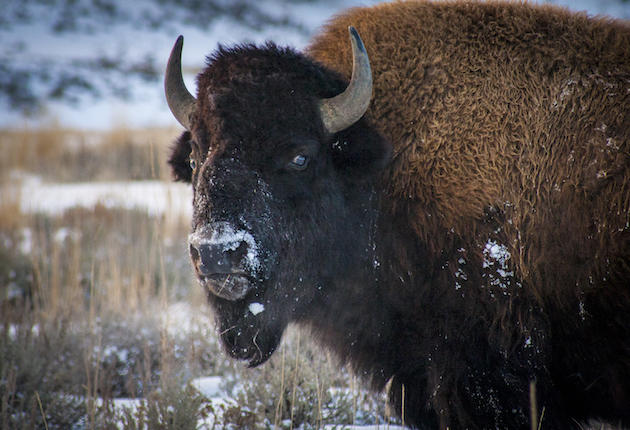Bison have become so overpopulated in the Yukon that officials are allowing a five-month-long season to take place, with a strong emphasis on shooting cows.
According to CBC News, the Aishihik bison herd is estimated at 1,300 animals, with a target goal of 1,000. To reduce the herd to the desired level as quickly as possible, the Yukon’s wildlife agency, Enviroment Yukon, is urging hunters to not only shoot cows, but if a hunter has an additional permit, to shoot a calf as well.
Hunters reported 177 kills (119 bulls, 58 cows) last season, thanks in part to a mild winter that allowed more sportsmen to get outside and pursue the bison. Environment Yukon is hopeful that hunters will at least match that number between now and this season’s closing in March of 2016.
The Yukon’s herd is made up of wood bison, sometimes called mountain bison. They are heavier than their plains cousins, with the prominent shoulder hump forward of the front leg instead of directly above it. The subspecies was thought to be nearly or completely extinct in the early 1900s, but in 1957 200 individuals were found in Alberta. That herd has since recovered to roughly 2,500 animals.
Wood bison were reintroduced to the Yukon in the late ’80s. The Yukon’s bison were then used in Alaska’s reintroduction efforts. Between 2003 and 2008, several dozen animals were transported west to repopulate Seward’s Folly. Final approval for the herd’s release came earlier this year.
Environment Yukon estimates that wood bison populations would expand by 15 to 20 percent annually without hunting pressure. Since 1998, 1,400 bison have been killed. The ratio has previously been a 60:40 split of bulls to cows, but with the increased targeting of females that number could significantly change.
Although an extra 300 animals doesn’t seem like an exceptionally heavy burden on an area as large as the Yukon, those 300 bison represent a large drain on an already meager habitat. According to Quebec’s Northfork Bison Ranch, its herd requires three to four acres of ideal grassland per animal. That includes planted, fertilized, and weeded acreage. Wild bison on the opposite side of the country enjoy no such benefits.
Snow makes their never-ending search for food that much harder. With fewer competitors, the Yukon’s herd will be stronger and healthier going into future winters.
Cover Image: Thinkstock

